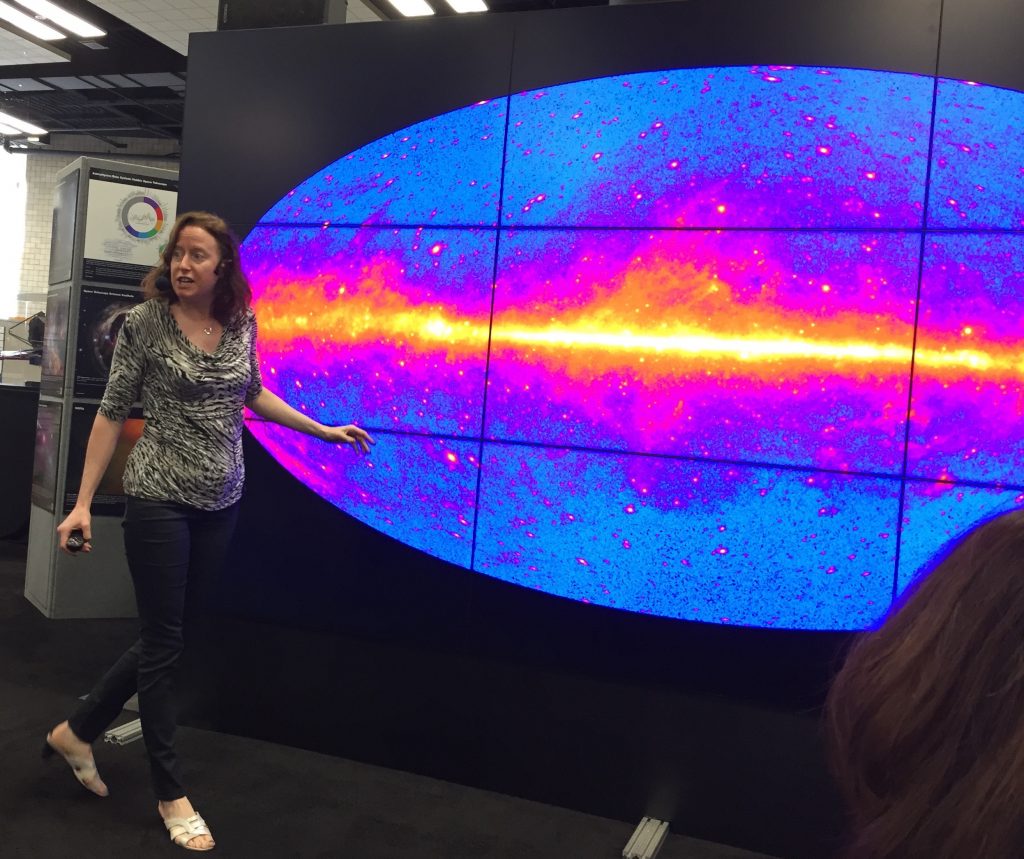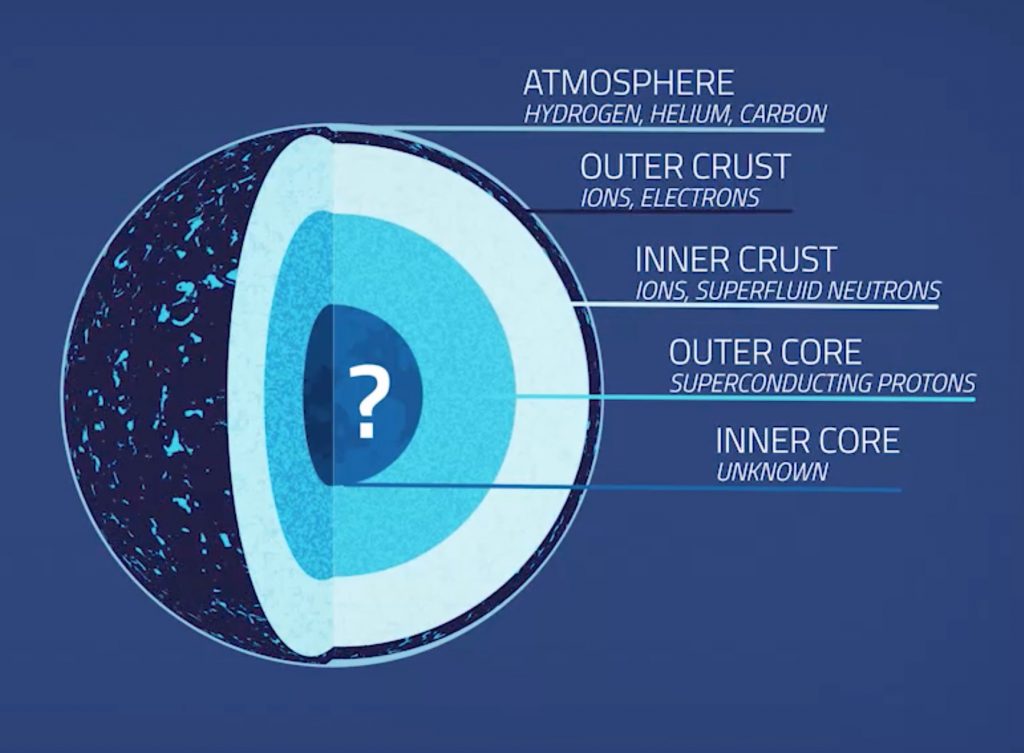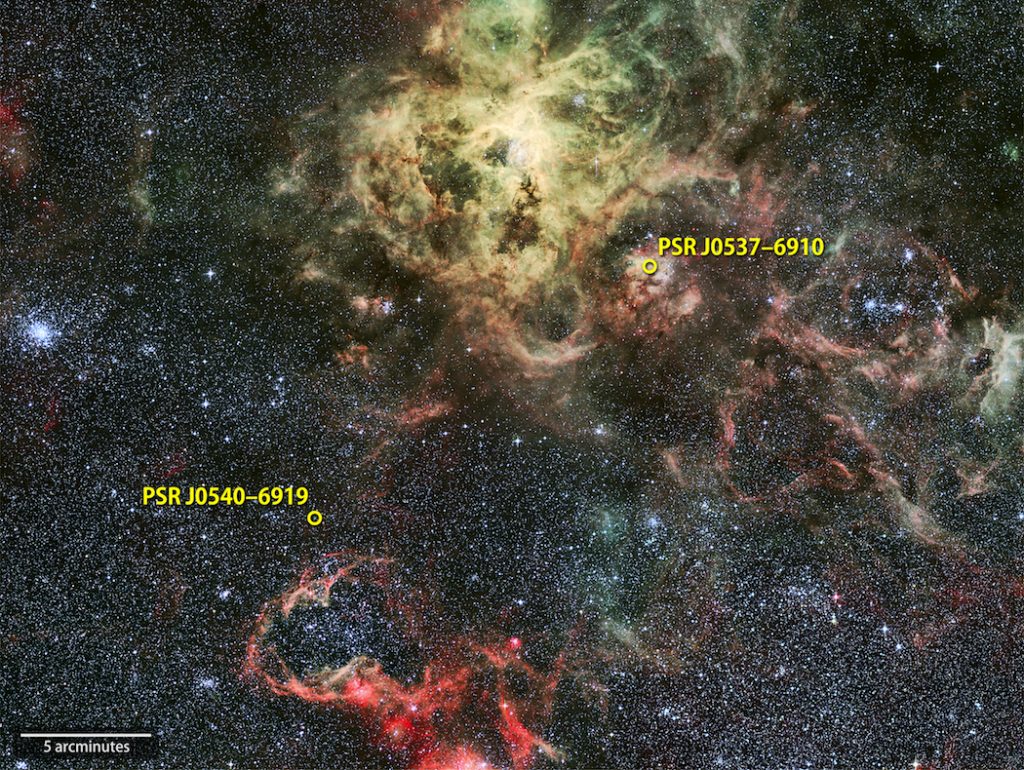#PulsarWeek: The women who study pulsars
- By Sara Mitchell
- August 6, 2017
- Comments Off on #PulsarWeek: The women who study pulsars
For the past week, we have been celebrating #PulsarWeek on social media in honor of the 50th anniversary of the discovery of pulsars. For more on the discovery itself, and about some of the researchers currently studying pulsars in NASA Goddard’s Astrophysics Science Division, here’s a guest blog from Goddard Office of Communications 2017 summer intern Kathryn DuFresne!
August 6, National Root Beer Float day, will be a normal Sunday to most people, but on this day in 1967, pulsars — a combination of the words “pulsating star” — were discovered.
The discovery by Jocelyn Bell Burnell occurred during her graduate school work, while she was analyzing over 120 feet of chart paper produced every four days from the new 81.5-megahertz telescope at Cambridge University. Unusual markings on the chart that she referred to as “scruff” took up less than an inch of the paper, but were strange enough to warrant further investigation. The flash, occurring every 1.33730 seconds, was the first pulsar ever discovered.

Dr. Jocelyn Bell Burnell discovered pulsars during her graduate school work at Cambridge University in 1967. This photograph, of Dr. Bell Burnell with a pulsar trace, was taken 1977. Copyright: Robin Scagell/Galaxy Picture Library (used with permission)

The data from first observation of pulsars came from less than an inch of data from the 81.5-megahertz telescope at Cambridge University. This strange “scruff” has now led to over 50 years of pulsar-based research.
Fifty years later, scientists such as Drs. Jean Swank and Elizabeth Ferrara, astrophysicists at NASA’s Goddard Space Flight Center in Greenbelt, MD, study the fast spinning neutron stars daily.
“They are fantastic objects, the highest densities of matter short of being a black hole, incredibly high magnetic fields, perhaps up to the limits allowed by quantum mechanics,” Dr. Swank said. “I love seeing phenomena that I know are complicated exhibit elegant, simple and organized behavior.”

Dr. Jean Swank studies pulsars in X-ray wavelengths. She came to Goddard under a National Research Council Fellowship and hopes to answer questions regarding the magnetic and gravitational fields of pulsars. Credit: David Friedlander
Quite a few varieties of pulsars are known, and the periodic flashes are known at all wavelengths, including the radio that Bell Burnell found, X-rays that Dr. Swank has studied for many years, and gamma rays that Dr. Ferrara works with. Questions regarding the objects still exist, making the field an active area of study. For Drs. Ferrara and Swank, their research allows them to follow in the footsteps of Dr. Bell Burnell’s discovery.
Dr. Ferrara’s adventure in astronomy began with studying active galactic nuclei, but she later joined the Fermi Gamma-Ray Space Telescope project. Her study of pulsars came about due to attraction to the mysteries in the data.
“I fell into pulsars from the back end, by looking at these mystery sources in the gamma rays,” Dr. Ferrara said. “It’s very frustrating to not know what these sources are because you don’t produce gamma rays by accident. Gamma rays are the signatures of some of the strongest, most violent, most extreme physics happening in the universe. To have these unknown gamma-ray sources… It drives you nuts. There must be something there and it must be interesting.”

Dr. Elizabeth Ferrara presents on NASA’s Fermi Gamma-Ray Space Telescope results using a series of high-definition screens known as the Hyperwall. Credit: Ishon Prescott/NASA’s Science Communications Support Office
This desire to understand what exactly is happening in the data is a driving factor for many who study pulsars.
“In some cases, we still do not understand what causes these phenomena or how,” Dr. Swank said. “For example, it is obvious that the X-ray flux from certain neutron stars, which we know are hidden pulsars, is oscillating at a changing frequency, but we do not know the cause.”

The above graphic depicts the layers of a neutron star, the remains of a collapsed large star. Most pulsars come from rapidly spinning neutron stars that appear to “pulse” with light. Credit: NASA’s Goddard Space Flight Center
Discovery thrives in the community of pulsar astronomers, but Dr. Bell Burnell was initially pushed to the side when her discovery was awarded a Nobel Prize in Physics. Dr. Bell Burnell did not receive the award, although the credit is primarily acknowledged as hers.
“It really makes you wonder for a discovery as significant as this, how many other people have had that happen to them?” Dr. Ferrara said. “For how many other people is the notoriety essentially gone and we’ll never know that it happened?”
Obstacles such as this are still present within the community, but both Ferrara and Swank agree that a majority of those in the field are there to support and encourage discovery by all.
“Frankly, I had a lot of encouragement and help along the way,” Dr. Swank said. “There are a lot of people who enjoy the discovery, knowledge and accomplishment, and many do not have prejudices as to who can do it or not.”

NASA’s Fermi Gamma-ray Space Telescope detected the first extragalactic gamma-ray pulsar, PSR J0540-6919, near the Tarantula Nebula (top center) star-forming region in the Large Magellanic Cloud, a satellite galaxy that orbits our own Milky Way. The Fermi telescope is used by many pulsar astronomers to detect and monitor the universe for rapidly spinning neutron stars. Credit: NASA’s Goddard Space Flight Center; background: ESO/R. Fosbury (ST-ECF)
Drs. Ferrara and Swank serve as inspirations in the astronomy field for many young girls and women looking to join them in science, technology, engineering and mathematics (STEM). As such, they gave their advice to those looking to explore the world of STEM.
“I’d give young women the same advice I would give to anyone,” Ferrara said. “It takes a lot of dedication. It takes a lot of focus. Don’t let anyone tell you that this is just a boys’ club. That’s not the way it needs to be.”
Swank’s advice reinforces the rewards of that dedication.
“Working in STEM is the best thing in the world, in my opinion,” Swank said. “It’s what the world is about and it repays your effort.”
Fifty years after their initial discovery, pulsar research by women is still making an impact on the astronomy community, answering some of the universe’s biggest questions, one “pulse” at a time.


